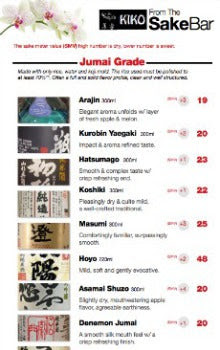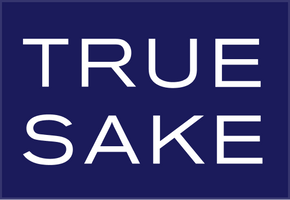Sake Tricks – How To Navigate A Sake Menu
So there you are! Sitting in that new sushi place! Or waiting in line at the new “Izakaya” which is the rage! With a sake menu in your hand you try to play it cool and you game plan what to order. So what do you order? Here are some basic tips to help you navigate the do’s and don’ts of ordering sake at a restaurant.

- First check out those prices! Egads! So pricey for a glass of sake or for a bottle. Restaurants charge an arm and a leg – it's that simple! Add to that the fact that many restaurants also do really small pours for all of that money! It’s not fair is it? In this regard, we strongly recommend going to the restaurant fully armed with your own bottle of sake and then pay the “corkage” fee, which is usually $15-$20 per bottle! Do the math! You bring your own bottle that is retail priced and add the corkage and I am sure that it’s cheaper than buying a bottle at the restaurant, and it’s definitely cheaper than getting two or three “glasses” which is never enough is it?
- If you go the “by-the-glass” route I say start with a little pricier Junmai Daiginjo or Daiginjo as your first glass to get that wonderful sake glow on! Then either follow that up with a mid-range 300ml if they offer one or pick a mid-priced Junmai or Honjozo for the remainder of your meal!

- If you are wanting that “just one glass” I highly recommend speaking to the Sake Sommelier or wine director if they have one and ask them specifically what is drinking well right now and go for a glass of that! Usually the Sake Som will pick a great brew and since you asked they might even make a better pour for you!
- If you decide to bite the bullet and buy a bottle I say steer clear of the Daiginjo category and seek out the most popular Ginjo label. Most Ginjos these days are milled to Daiginjo levels and you’re not paying that Daiginjo price.
- If they bring out little shot glasses for your individual pours then ask for wine glasses. If you are paying big bucks for a glass of sake then get a glass! This might even get you a bigger pour for the same price.

- If you order a glass of Daiginjo as your starter ask the server to pour the sake in front of you! That way you can check out how much sake is left in the bottle. Typically, the expensive sakes by the glass don’t move as fast as other sakes and as a result the bottle stays open and perhaps oxidizes more, which could affect the sake. Always check the level of the brew in the bottle and if it’s near the bottom ask the server if they would consider opening another bottle – and if there isn’t that much left they may even let you taste the bottom of the bottle for free!
- If you go the bottle route then it’s very important to check the bottle date! Basically you want a bottle that is less than a year old!
- Oh and don’t forget the hot sake selection. Do they only offer one type of hot sake? If so it’s probably a cheap domestically made sake that is serviceable. But I say try to mix things up. Ask your server if they would warm a sake for you from their Junmai or Honjozo list. If the server balks, ask the sake sommelier or the wine director. In a way you could be educating them as well. Ask their opinion of what would warm well, and then even ask if you can compare it to the house hot sake. Many places don’t realize that they could charge a little more for a premium hot sake. Plus you look cool in the hot sake process.

- To masu or not to masu? This is a big question in this day and age. In SF there is a food ordinance that makes it a problem to serve directly in a wooden box. Many places put a glass in the masu. Then they do the over pour! If this happens I always take the first sip from the glass then put it on the table top, not back in the masu, which still has fluid in it. I then pour the corner of the masu into the glass when it gets low enough. Be careful however, as many places bill you for a full masu when in fact it is not full. Ask your sake server if they know how many ounces are in the masu? More than likely they do not, and it’s a way for you to try and wiggle out a little extra sake!
- Lastly, if you ever take a premium bottle of sake to a sushi counter, more often than not if you share your sake with the sushi chef they will wave the corkage fee. Almost always!! Hint Hint!
